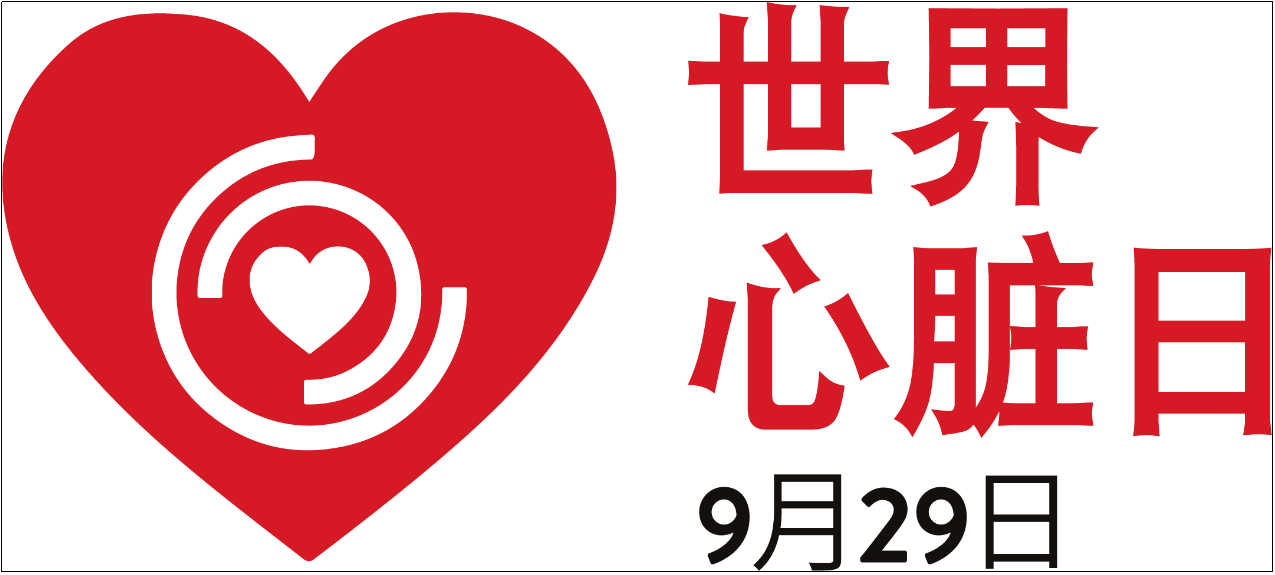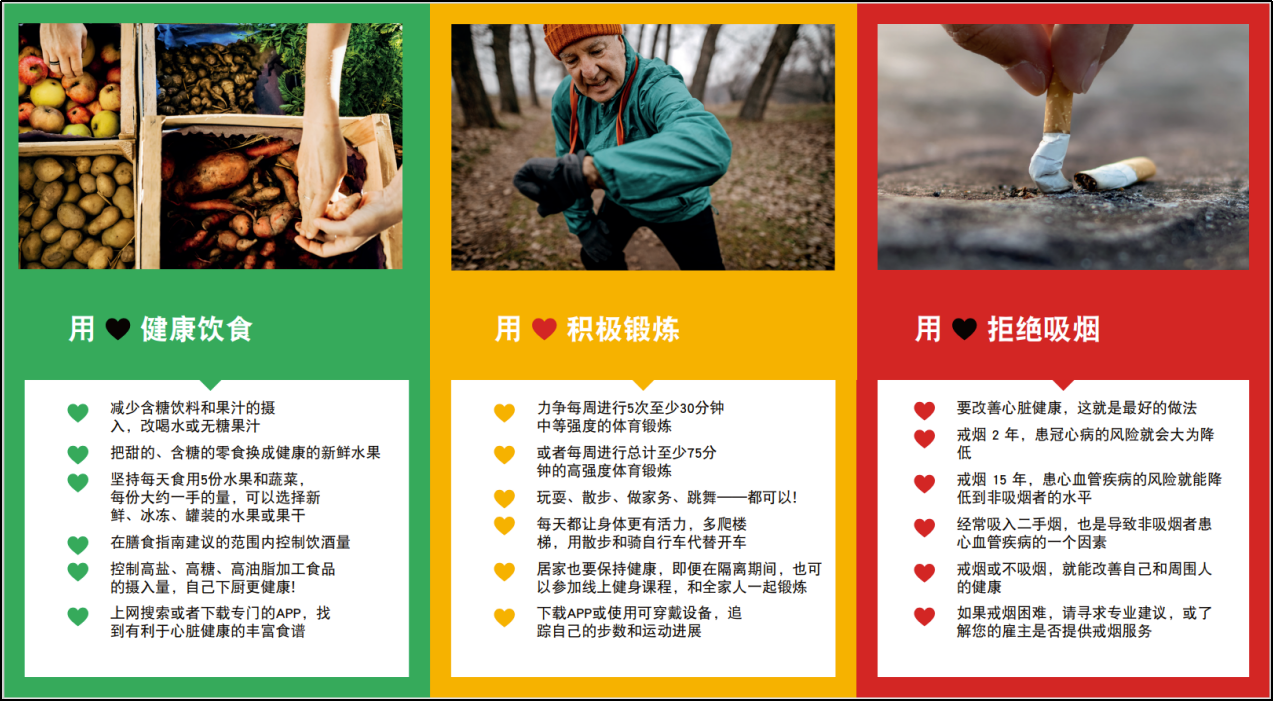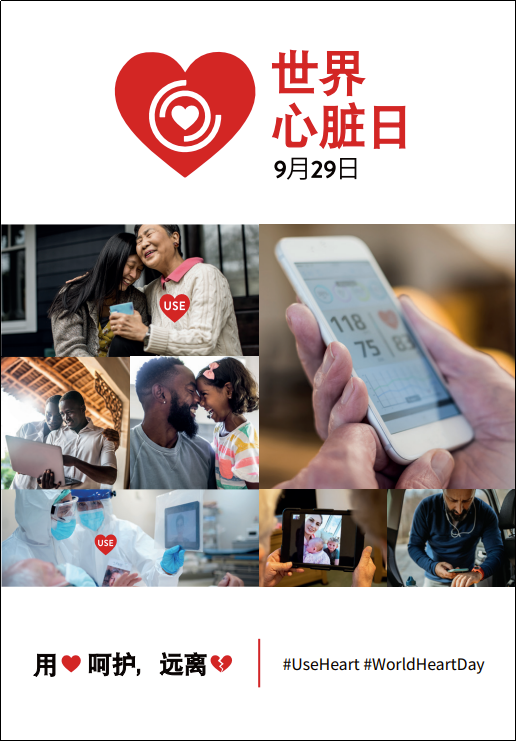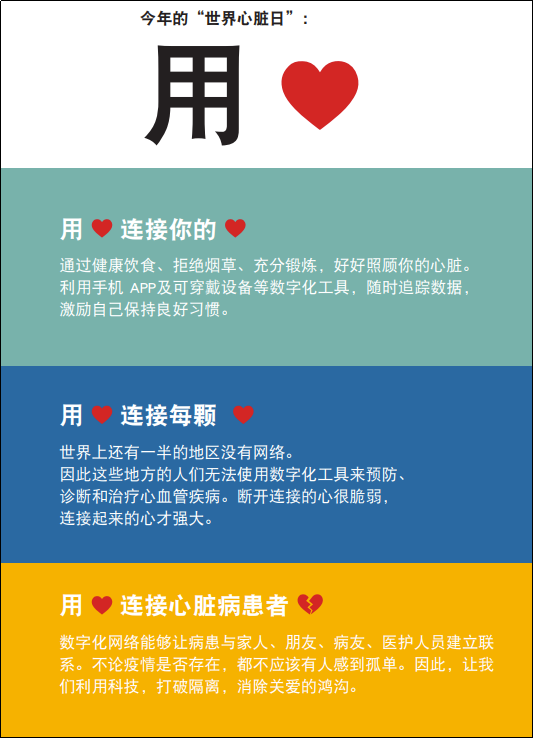"Connect with you" to jointly protect cardiovascular health
September 29, 2021 marks the 21st World Heart Day, and this year's theme is "Connect with ?". World Heart Day was established in 1999 by the World Heart Federation (WHF) to promote knowledge about heart health worldwide and to make the public aware of the importance of a healthy heart to life. Heart disease is the number one killer that threatens human life and health, with 520 million cardiovascular patients worldwide. The risk of cardiovascular disease increases with age. Therefore, the elderly is a high incidence group of cardiovascular diseases, and it is necessary to have a scientific understanding and give enough attention.
Understanding heart disease starts with understanding its risk factors. Diet, exercise, obesity, blood pressure, blood sugar, blood lipids in the daily life of the elderly will have a certain impact on cardiovascular disease. For example, smoking and drinking can damage the vascular endothelium and easily cause coronary heart disease; Lack of exercise will make us eat food digestion is not complete, the formation of fat storage, become obese, and cause the "three high" - high blood pressure, high blood lipids, high blood sugar. The "three highs" will damage the vascular endothelium, make the blood pressure become sticky, form atherosclerotic plaque, in severe cases, plaque rupture, thrombosis, resulting in myocardial infarction, stroke and other serious consequences.
Therefore, in order to have a healthy heart and body, the elderly should do a good job of cardiovascular disease prevention, usually eat more vegetables and fruits, eat less high-sugar and high-fat foods, reasonable diet, more exercise. If you are already ill, follow the doctor's advice, rational drug use, usually try to control their emotions, avoid emotional ups and downs, more joy, less sadness.
With the arrival of autumn and winter, cold weather is easy to stimulate the contraction of blood vessels, resulting in increased blood pressure, insufficient blood supply to the heart and other conditions, the risk of myocardial infarction is also significantly increased, but also to be vigilant. In addition to the common chest pain symptoms, some signs of myocardial infarction should be recognized and timely medical treatment.
1. Don't panic after neglecting activities. Many patients in the heart attack before the onset of obvious activity after palpitation, but rest for a while palpitation symptoms can be improved, at this time must not be paralyzed to miss the treatment opportunity, to seek medical attention in time for a clear diagnosis.
2. Tightness in the throat. Some patients do not have obvious chest pain symptoms, but will suddenly feel tight in the throat, as if someone is stuck in the neck, especially after climbing the building, running and other relatively intense activities, but the general symptoms will return to normal for a few minutes, this time should also be paid attention to.
3. Sudden fainting. After physical activity in the elderly, especially in autumn and winter cold weather, after a full meal, myocardial oxygen consumption increases, easy to induce myocardial infarction, once the relevant symptoms appear, we must consider whether it is cardiac cause.
4. Pain in other areas. It may be toothache, jaw pain, pharynx pain, shoulder and back pain, upper arm pain, upper abdominal pain, etc., but one characteristic is that most of the pain is an attack after activity, the duration is short, and the rest can be relieved for a few minutes, but there may be other symptoms such as chest tightness, choking, vomiting and so on. At this time, it should be considered as an omen of myocardial infarction to seek medical attention in time.
At present, the whole world is still struggling with the COVID-19 pandemic. Never before have we been more aware of the importance of our own health and that of our loved ones. This year's World Heart Day, 29 September, is more important than ever. It reminds each of us to "connect" our own heart, to do our best to love and nourish it, and to harness the power of digital to connect every heart everywhere.







Cardiovascularology section
(The opinions expressed are solely those of the author. Some pictures in this article are from the Internet, if there is infringement, please contact to delete)

